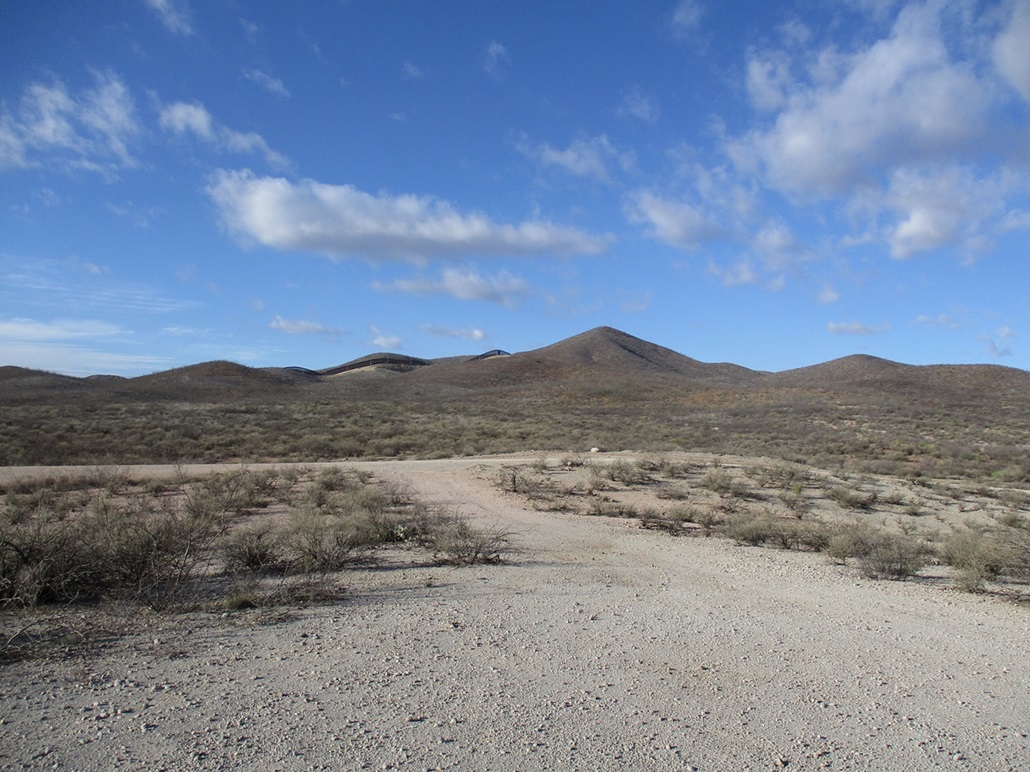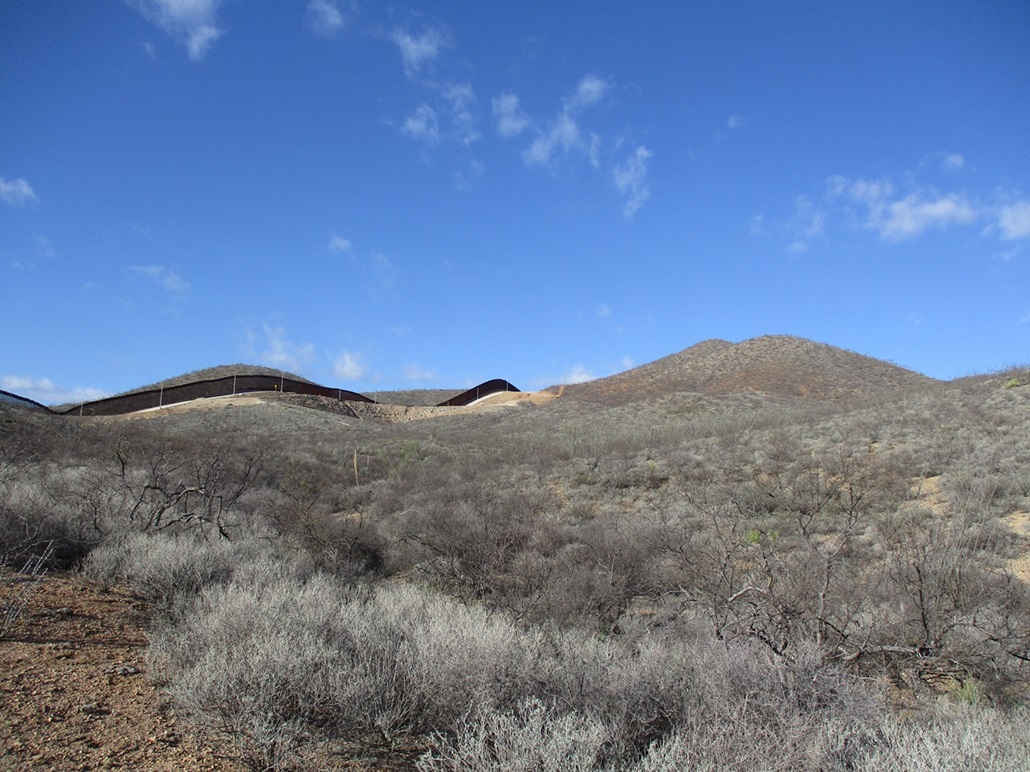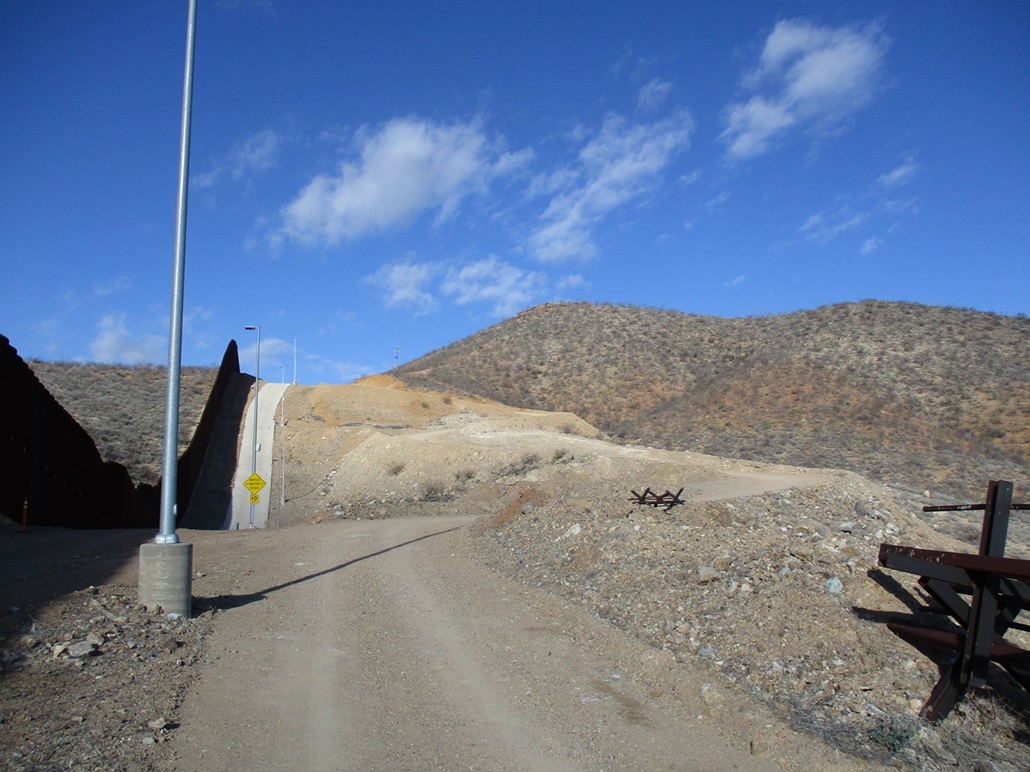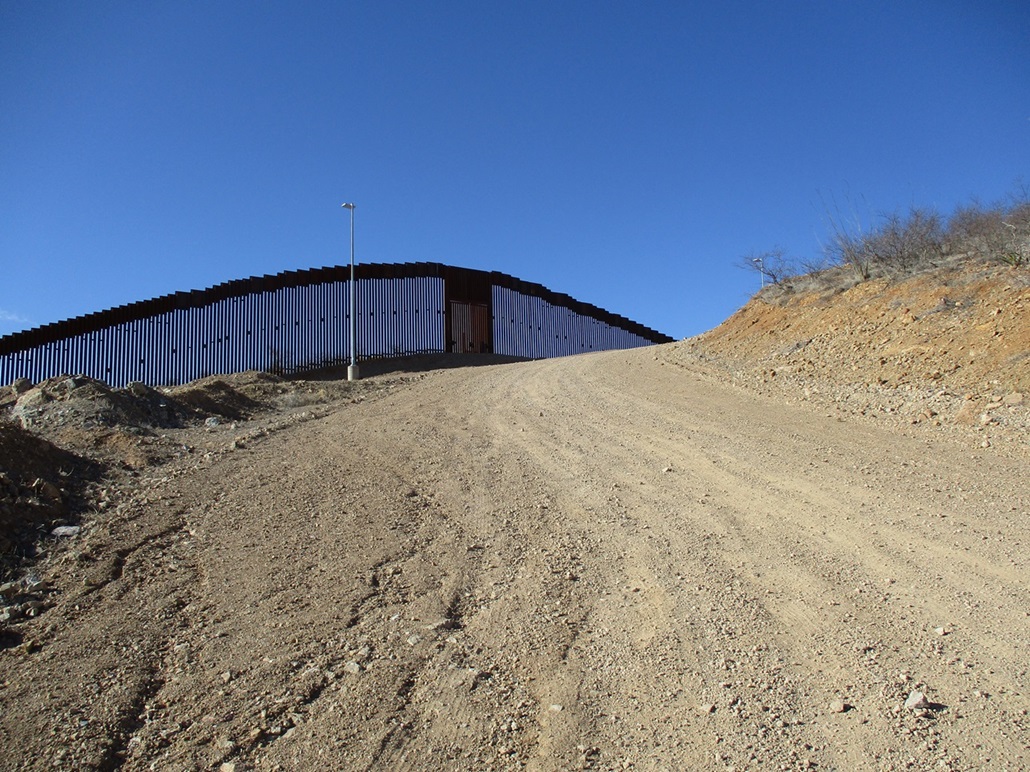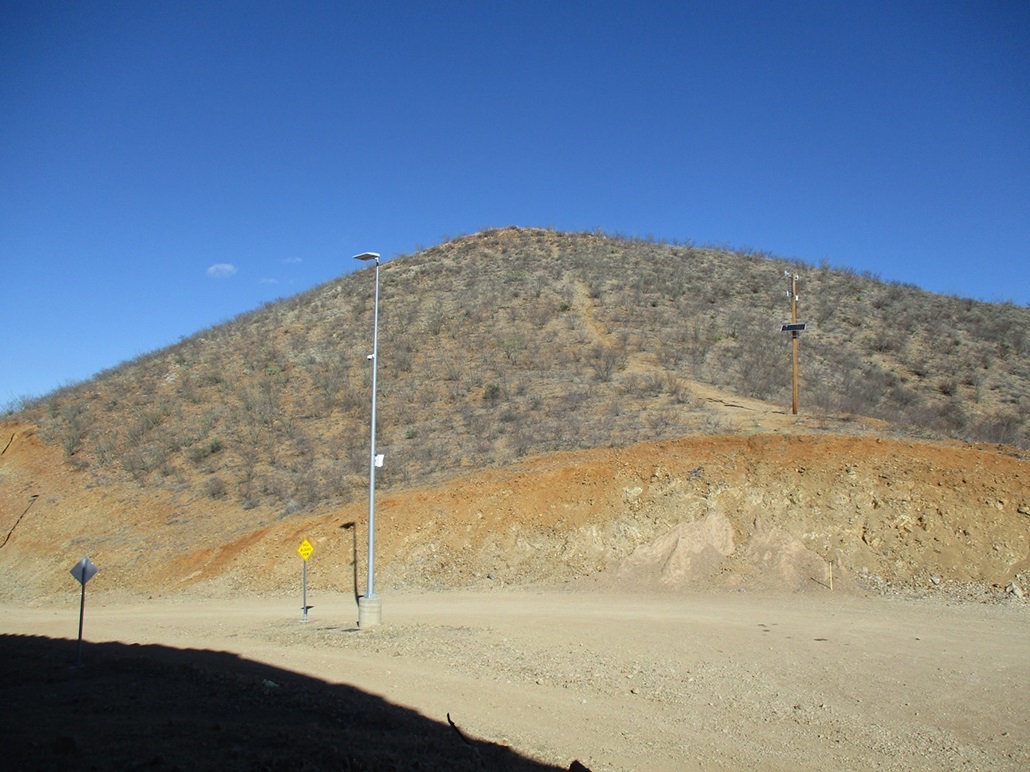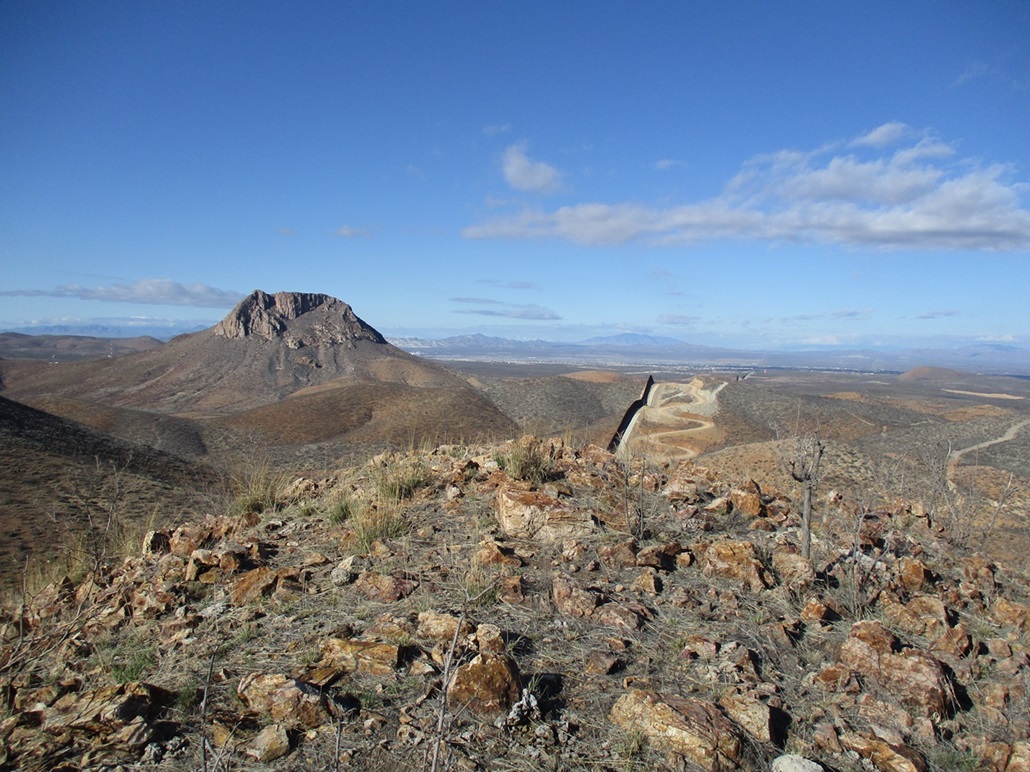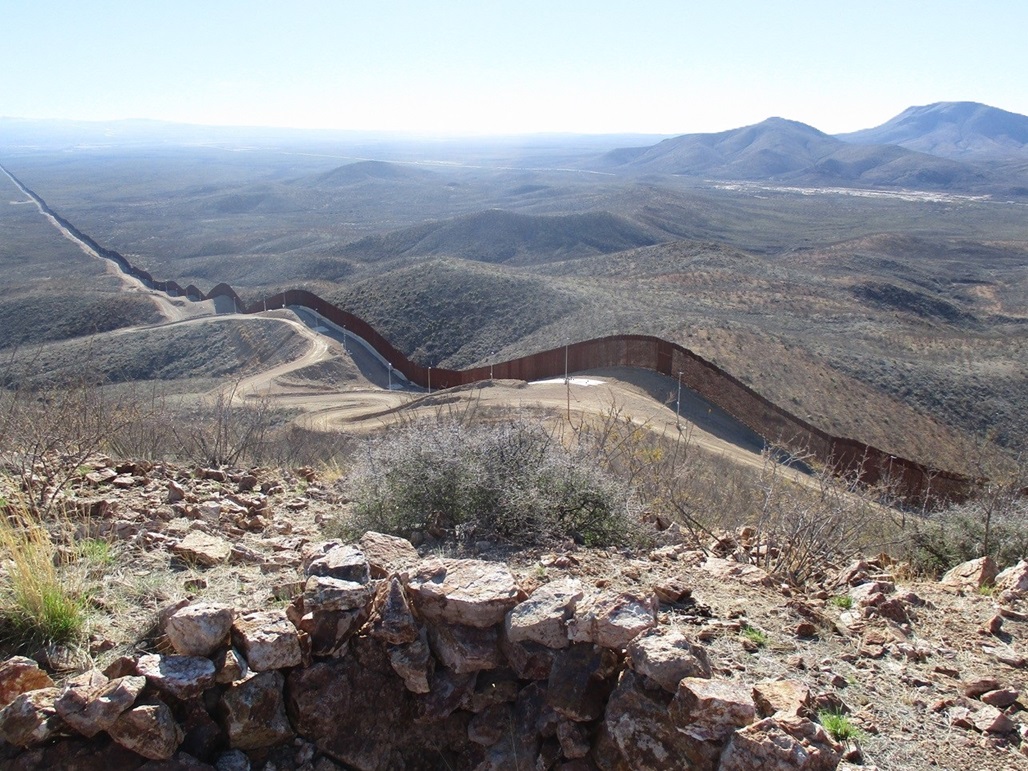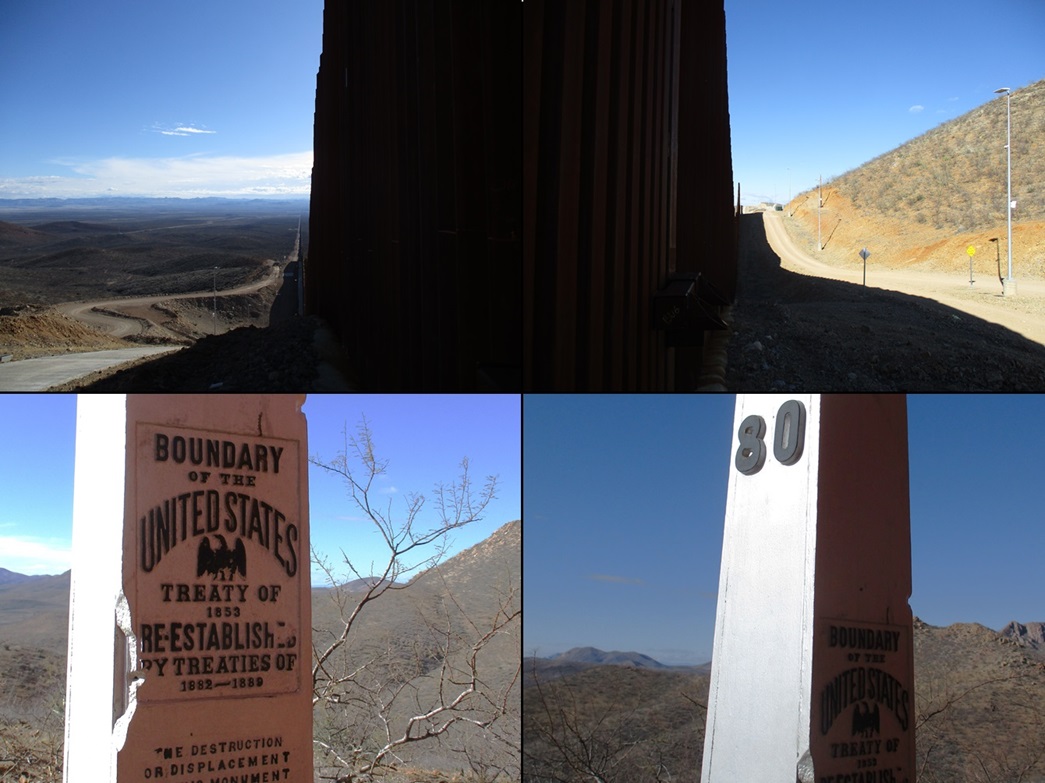
The Mountains of
Arizona • www.surgent.net |
| Border Monument 80 Hill |
• Perilla Mountains • Arizona State Trust Land • Cochise County |
|
Date: February 28, 2024
• Elevation: 5,033 feet (per 1/9 arc-second lidar)
• Prominence: 294 feet
• Distance: 2.4 miles
• Time: 1 hour
• Gain: 730 feet
• Conditions: Sunny and cool
Arizona
•
Main
•
PB
•
LoJ
I had a couple hours open in the morning and was looking for a peak that wouldn't take too long and wasn't too far away. Ten days ago, I had climbed nearby Perilla Mountain, and saw this peak was close by. After that hike, I drove the road, Geronimo Trail, a litle more east to scout tracks to this peak, but chose not to hike it at that time. I was also watching the weather, as some rain was expected to move through the region this afternoon. For now, things were mostly sunny with some clouds.
This peak is a pointed hill at the south tip of the Perilla Mountains, where the range spills over into Mexico. The hilltop lies about 500 feet from the border, and tracks branch off Geronimo Trail, which runs about a mile north of the border here, to the service roads paralelling the border wall. Border Monument #80 lies on a ridge slightly southeast of the hill's summit. I was interested in visiting the monument, too.
I left Bisbee at 7:45 a.m. and was in Douglas twenty minutes later. I stopped in the Circle K for snacks, including my kryptonite, a pack of molasses "cochitos", a Mexican-style pastry that I pick up every time I pass through. I passed through Douglas itself and then onto the Geronimo Trail. Having been here a week and a half ago, I knew where to go. I pulled into a cleared pullout north of the road, a little northeast of the hilltop. I could see the border wall undulating up and down with the ridges beside the peak. I was about a mile on a straight line from the peak, but the walking route would wander a little, adding distance. I started walking at 8:30, the weather sunny and pleasant, temperature about 55° with no breeze.
I crossed the main road and got onto a track heading southwest. This track had a good tread, mainly gravel with almost no big rocks, but it was full of leans and high centers and a couple of steep entry-exit points into the main arroyo. Only a high clearance vehicle with 4-wheel drive would be sufficient. For walking, it was easy and I made good time.
Being so close to the border, I was mindful of possibly encountering border crossers or the Border Patrol. I paid attention and often stopped to scan the high ridges or peer into arroyos, but I saw nothing and heard nothing. I saw about ten of those carpet-soled shoe covers the crossers use to hide their footprints, and maybe a couple water bottles, but overall, I saw very little trash. It was a very clean hike.
Toward the end, where the track meets up with the newer service road abutting the border wall, I found a small lone calf. It watched me walk by then followed me. I did not see its mama or any other cattle and wondered if it was lost or abandoned. It only followed me a few yards. It was tiny, about waist high to me. I hope the little fellow found his mommy.
The track fed me onto this service road, which is newly built as part of the overall construction of the border wall. I was about a quarter mile east of the peak, about a hundred feet north of the border wall. It was quiet. I was expecting some Border Patrol trucks parked somewhere but nothing. Looking through the slats in the wall, I didn't see anyone or anything, just more desert hills. I moved quickly, hiking westbound up this service road, which switchbacks to help alleviate the gradient. This placed me below an ancient path (ATV? foot?) that goes to the top of Border Monument 80 Hill, which I have dubbed this hill.
This last segment was about a 200-foot gain up steep rubbly slope onto a rocky crown and a summit that ran about fifty feet long, the west end being highest. I walked to it and shot a couple images. There is a dugout about three feet deep with low walls around it, probably built by border-crosser sentries to hide out in. I looked for a cairn or register, but found nothing. I never stopped, and started right back down. The downhill was loose and slippy and slidey, but I went slowly and never once landed on my fanny. I was back on to the service road. Now it was time to go touch the wall for the first time.
I've been at or on the Mexican border a few times now, but never to the wall after it was built out. Usually, it was just lower fencing or nothing at all. The wall is ... opinions vary. I was against its construction originally and thought then and still think now it is an ugly blight, but I also recognize that without the wall, it would be chaos with all the people looking to cross. Maybe not right here exactly, but in other places, most certainly. It is a necessary evil for now.
The wall is tall, about 50 feet high, with metal stanchions about six inches thick and spaced apart about 6 inches. It is rust colored, and the concrete foundation is sits upon is now rust colored as well. The border monument was visible behind the wall about two feet. I walked to it and stuck my arm and camera through the slats and snapped a couple images of the monument. These things were erected back in the 1800s and are obelisks, usually about ten feet tall, with wording marking both country's boundaries. I was bummed it was hidden by the wall.
This got me thinking. The monuments are supposedly exactly on the border, so when I stuck my arm in, it was still inside America. It would not have been possible to built the wall exactly on the line because the Mexican government wouldn't be cool with that, so it was evidently buit a couple feet (two? five? ten?) feet north of the line. This means a narrow sliver of land immediately south of the wall is within the United States, too. Could someone come up to it from the south, technically within the United States now, and ask for asylum?
I spent about five minutes hanging around the wall. The whole time, I was expecting to see or hear some Border Patrol guy come rumbling up in his truck, but no one ever did. I had open views to the east and saw nary a truck or vehicle of any sort. To the west was a guy in a front-loader doing maintenance. I never saw any crossers or any BoPo guys. There were no signs anywhere that this area was private or off-limits. It's all State Trust land here.
I got back onto the track back to my car, and was back to my car at 9:30, a 2.5-mile, one-hour hike with about 730 feet of net gain. I took a look at some peaks north of the road but did not have time for them as I needed to get back home and be productive. I was back in Bisbee a little after 10 a.m., and yes, later in the day, the storms moved through with lightning and thunder, rain and hail but just for about a half hour.
There is a peak that rises about a half-mile south of the border, with a similar elevation. Lidar is helpful but not definitive. The summit of this peak (the one I climbed) comes in at 5,033 feet, but this is based on the 1/9-arc second (10m) datasets from 2007 (USGS NED ned19_n31x50_w109x50_az_mexico_lot2_2007 1/9 arc-second 2009 15 x 15 minute IMG), which is better than the 1.3-arc second sets, but not as trustworthy as the 1m data sets. The peak in Mexico comes in at 5,049 feet and is based on the 1-meter data set (USGS 1 Meter 12 x65y347 AZ_CochiseCounty_2020_B20). The saddle (key col) appears to be on the service road alongside the border wall, and comes in at 4,739 feet. But this lies exactly on the seam between the 1-meter sets and the 10-meter sets, so there's that adding to the uncertainty. I'm going to go with these figures for now, noting that this peak barely misses out on being a ranked peak.
|
|
